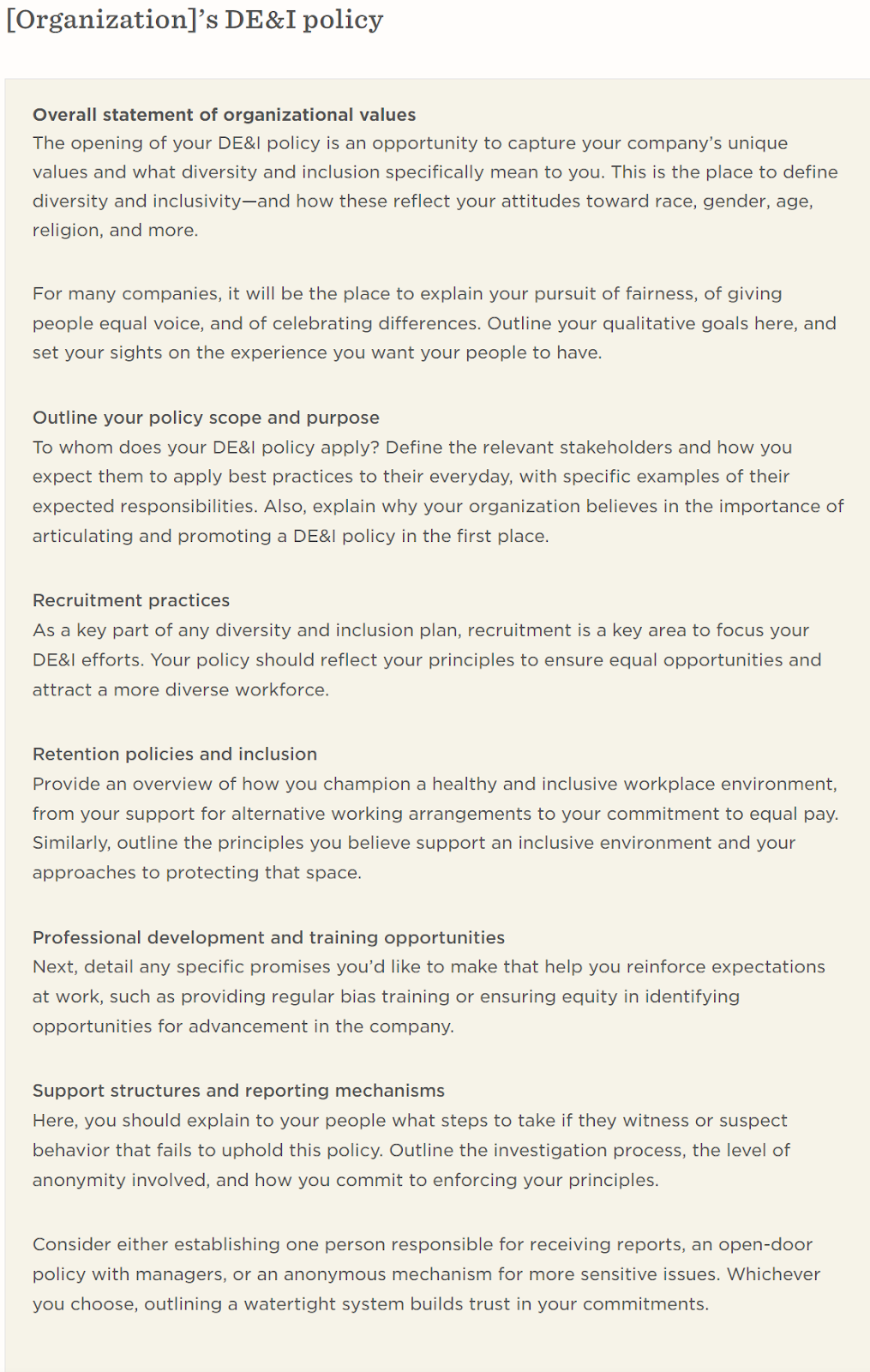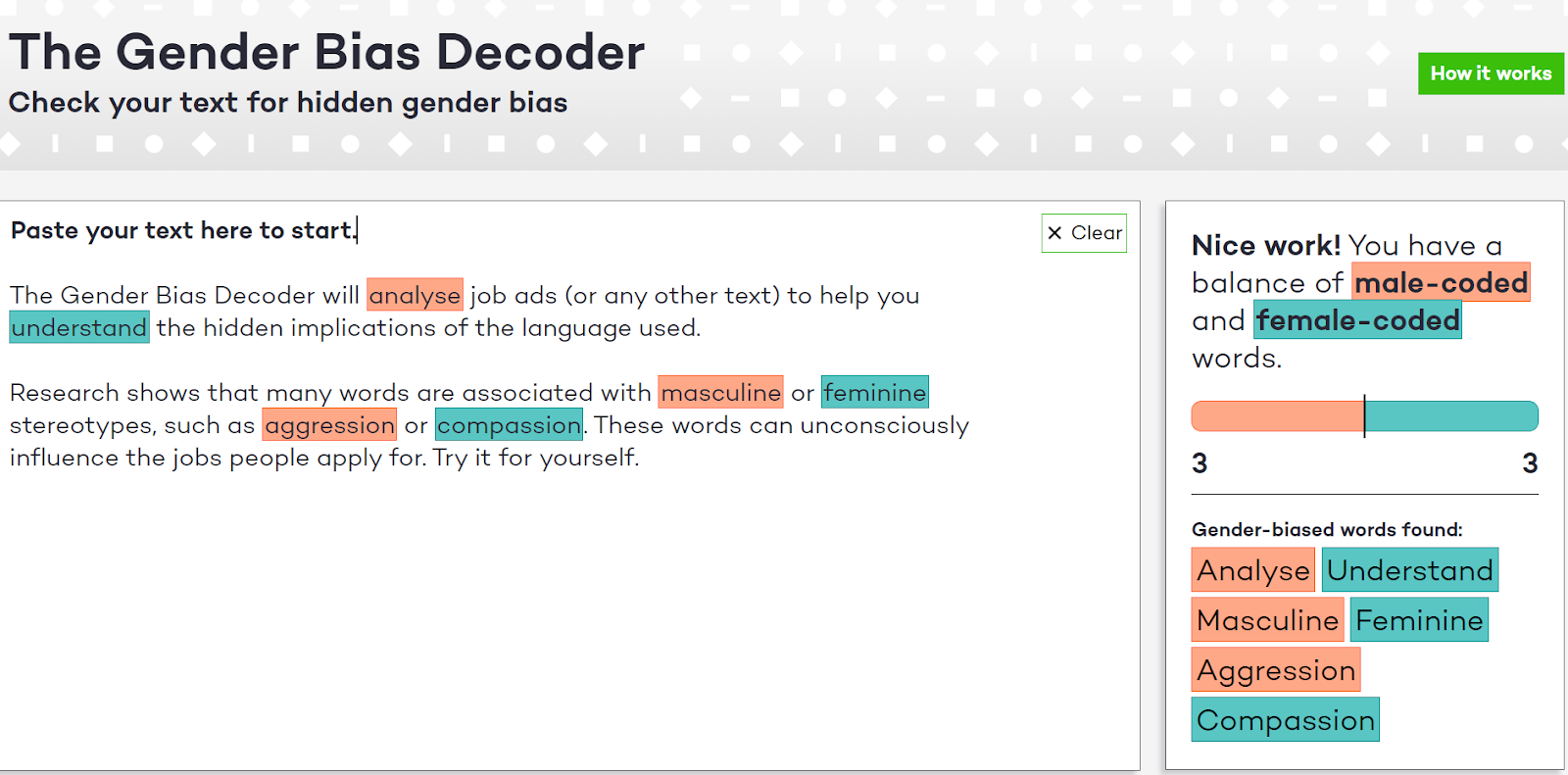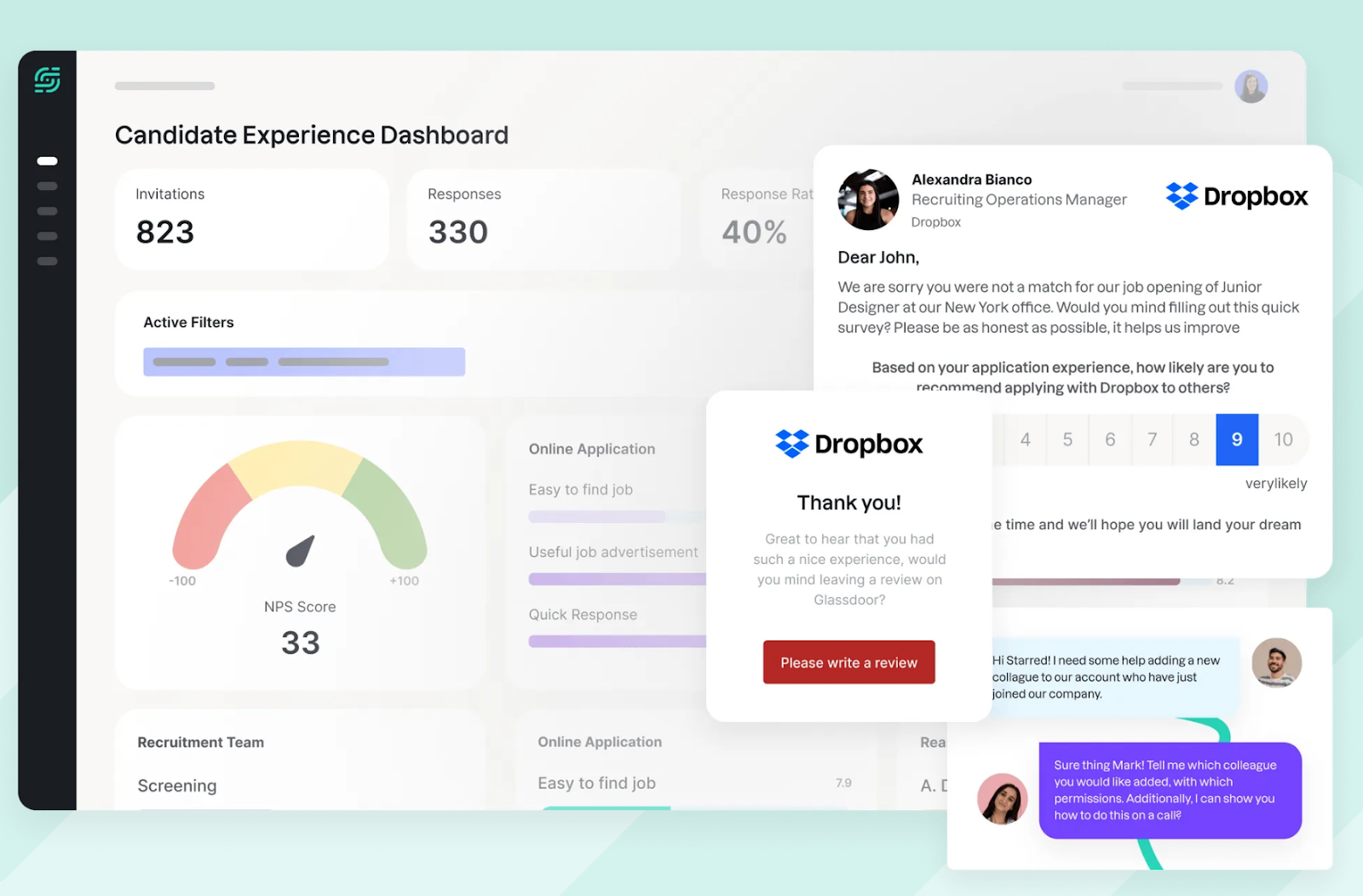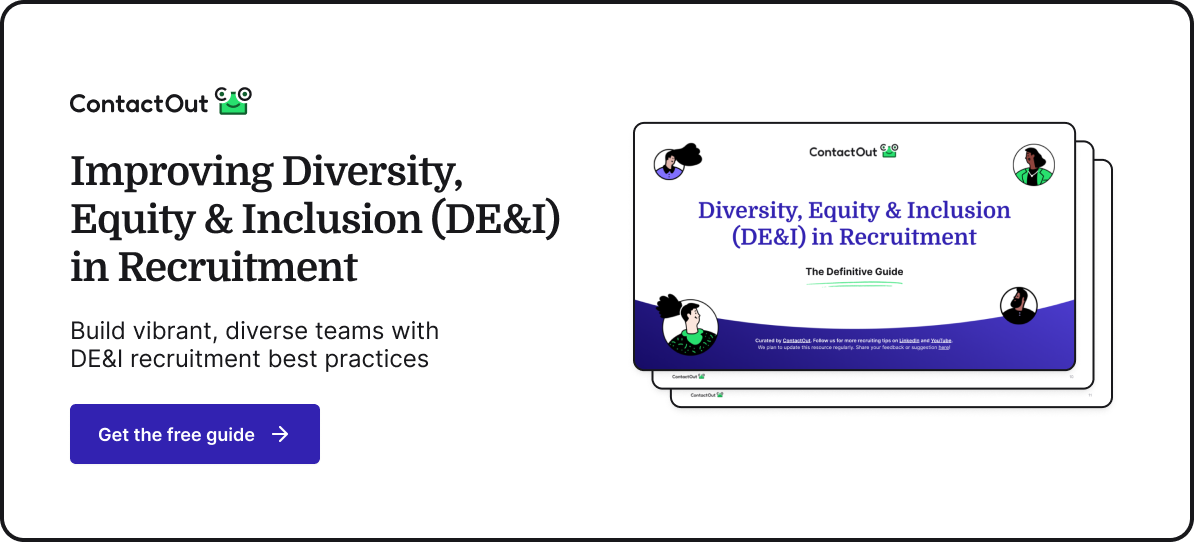📖 What is this lesson about?
This guide is about understanding and implementing strategies to enhance Diversity, Equity, and Inclusion (DE&I) in the recruitment process.
🎯What will you learn by the end of this guide?
- The significance of DE&I in recruitment.
- Practical steps to integrate DE&I into your hiring process.
- Real-world examples of successful DE&I recruitment strategies.
- Resources and tools to further your DE&I journey.
💡 Why is it important?
In today’s globalized world, diverse teams bring a wealth of perspectives, drive innovation, and mirror the diverse markets companies serve. Prioritizing DE&I is not just ethically right but is also a business imperative.
🚀 Here’s the step by step to do it:
1. Understand DE&I:
- Definition: Recognize that Diversity is about the mix of people, Equity is about ensuring fair treatment, and Inclusion is about creating an environment where everyone feels valued and can thrive.
- Here’s an example of what a company’s DE&I policy might look like:

- Assessment: Conduct a company-wide survey to understand the current DE&I perceptions and areas of improvement.
2. Data-Driven Decisions:
- Baseline Metrics: Analyze the current composition of your workforce. Understand the gender, ethnicity, age, and other demographic breakdowns.
- Set Clear Goals: Based on your findings, set specific, measurable, achievable, relevant, and time-bound (SMART) goals for DE&I.
3. Diverse Job Descriptions:
- Inclusive Language: Avoid gendered terms like “rockstar” or “ninja.” Use tools like Totaljobs’ Gender Bias Decoder to ensure the language is neutral and welcoming.

- Highlight DE&I: Mention your company’s commitment to DE&I in the job description.
- Here’s an example of a diversity commitment statement from a Geckoboard job description:

4. Blind Recruitment:
- Anonymize Applications: Use software that hides names, addresses, and educational institutions to prevent unconscious biases.
- Skill-Based Assessments: Focus on skill tests and task-based assessments rather than resumes.
5. Diverse Interview Panels:
- Representation Matters: Ensure that interview panels have diverse members, representing different genders, ethnicities, and backgrounds.
- Standardized Questions: Use a consistent set of questions for all candidates to ensure fairness.
6. Training:
- Unconscious Bias Workshops: Organize regular workshops to help your hiring team recognize and counteract their biases.
- DE&I Champions: Identify and train individuals who can lead the DE&I initiatives and mentor others.
7. Partner with Diverse Organizations:
- Engage: Collaborate with organizations, colleges, and groups that cater to diverse communities.
- Job Fairs: Attend and sponsor job fairs focused on diverse talent pools.
8. Feedback Loop:
- Post-Interview Surveys: After interviews, ask candidates for feedback on the process, especially regarding DE&I. You can use platforms like Starred to craft your feedback forms and surveys.

- Regular Check-ins: Once hired, have regular check-ins with employees to understand their experience and gather insights on improving DE&I.
🫧 Here’s an example of it:
👋 XYZ Tech Inc. noticed that their tech department was predominantly male and lacked ethnic diversity.
They took the following steps:
- Conducted a company-wide survey to gauge perceptions about DE&I. The results showed that many employees felt there was room for improvement.
- They set a goal: Increase female representation in the tech department by 30% and hire from a broader range of ethnic backgrounds within 18 months.
- Revised their job descriptions using Textio, removing terms like “coding ninja” and emphasizing their commitment to DE&I.
- Implemented blind recruitment, focusing on skills rather than names or educational backgrounds.
- Ensured that interview panels had both male and female interviewers, as well as representation from different ethnic backgrounds.
- Organized unconscious bias workshops, which became a turning point in their hiring process.
- Partnered with “Women Who Code” and attended diverse tech job fairs.
- After 18 months, not only did they achieve their goal, but the feedback from new hires was overwhelmingly positive. They felt valued and saw that XYZ Tech Inc. wasn’t just talking about DE&I but was genuinely committed to it.
🛤 Next steps:
- Regularly review and update your DE&I strategy.
- Engage with your hires to understand their onboarding experience.
- Expand DE&I beyond recruitment – into retention, promotion, and company culture.
📚 Further resources:
- 20 DE&I Recruitment Tools
- Building Inclusive Hiring Strategies for High Volume Recruitment
- The 5Cs Framework for Inclusive Job Descriptions
- How to Recruit Candidates with DE&I in Mind













